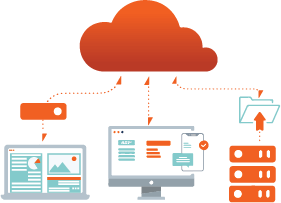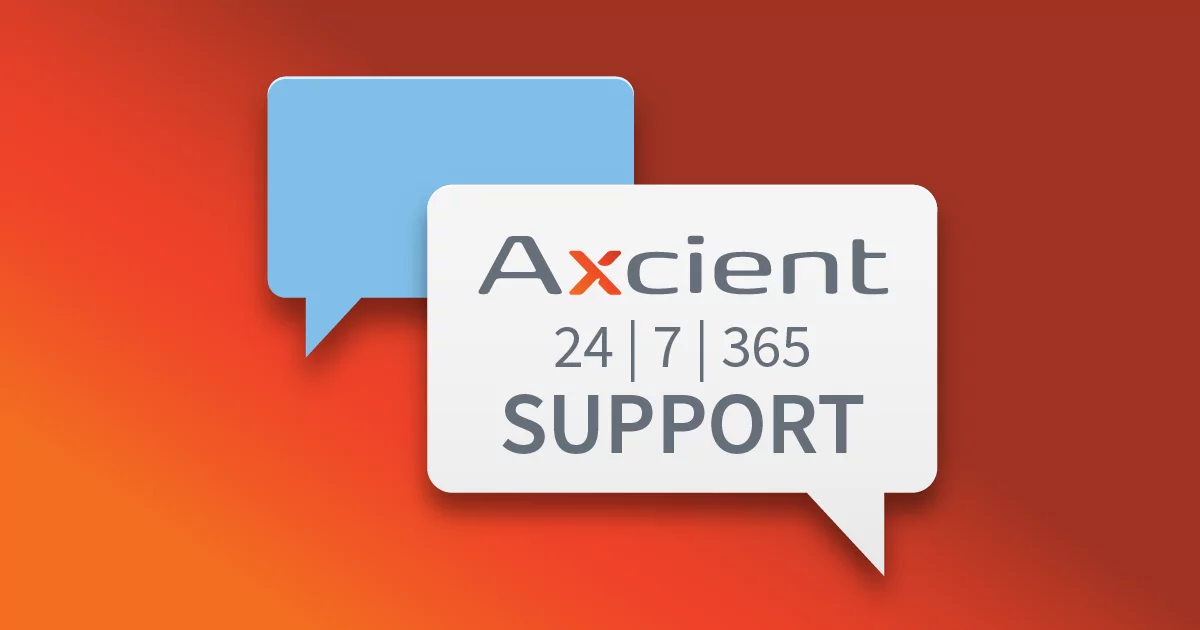
RTO Calculator for Direct to Cloud BCDR
Have you ever tried calculating how much time is actually spent during a recovery? Axcient’s x360Recover Direct-to-Cloud Recovery Time Objective (RTO) Calculator is a fast and intuitive tool. MSPs can use it to calculate (and compare) the relative time required for a data restore download.
Address the RTO Needs of Your Clients
RTO is a crucial metric informing an MSP’s business continuity and disaster recovery (BCDR) solution choice and deployment decisions. A cloud backup RTO calculator helps an MSP to know how much downtime will cost an organization is critical for understanding what kind of investment in BDR makes sense for your clients’ businesses. A solid RTO number allows an MSP to weigh their clients’ economic tolerance for how much data loss and downtime they can afford to suffer and compare it against the investment they’ll choose to make in backup and disaster recovery systems.
RTO Under One Hour with Local Cache Acceleration
Another important consideration is the shorter RTO an MSP can deliver using Axcient’s patented Local Cache feature in their Direct-to-Cloud (D2C) deployments. Local Cache enables x360Recover D2C to deliver fast RTO for our partners; it is an “expediter” and allows you to virtualize via an on-premise Hyper-V deployment.
This D2C RTO calculator is a valuable tool that compares recovery speeds for D2C when paired with a NAS or USB local cache device against an FTPS client or a bare metal restore. MSPs can see that our patented Local Cache with D2C deployments makes a big difference. Use it to calculate (and compare) the relative time required for a data restore download.
Try the RTO Calculator for Direct-to-Cloud for yourself and see what kind of RTO we can enable you to deliver to your clients.
Talking About the Cost of Downtime with Clients
The first step in choosing how to structure and deploy a client’s disaster recovery (DR) is to establish their recovery time objective or RTO. As a best practice, a client’s RTO should determine the disaster recovery solution and deployment an MSP chooses. MSPs must be careful not to make assumptions about how their clients will view the costs and inconvenience of downtime. It is important to remember to have this important discussion with them. Before starting DR plans, an MSP has to educate their clients on the cost of downtime to get real about their expectations, which can help you get to that RTO number.
Knowing how much downtime will cost an organization is critical for understanding what kind of investment in backup and disaster recovery makes sense for its business and its RTO target. Having a solid ballpark number allows these organizations to use cold, hard facts to weigh their economic tolerance for how much data and downtime loss they can afford to suffer, and compare it against the investment they’ll choose to make in backup and disaster recovery systems.
Do the Math on Downtime Costs
Obviously, soft costs can be extremely tricky to calculate. So to come to a reliable estimate of your cost of downtime, it makes sense to focus primarily on hard costs. One simple but effective calculation to be made is the following:

As you calculate, be sure to factor in whether downtime would be complete or isolated based on the concentration of offices or workplaces.
“Axcient gives us the ability to ensure continuity for our clients. There have been many times where Axcient has quite literally saved the bacon of these businesses and you wonder if they would still be in business today if we didn’t have Axcient.” -MARK JAMIESON, 2W TECHNOLOGIES
Author
Related posts
8 Tips for Optimizing Your Disaster Recovery Strategy
If disaster strikes, how will your organization respond?

How well could you sleep with reliable cloud-based backups and recovery?
Take a deep dive into Axcient’s proprietary, automated security features to see how we’re ensuring uninterrupted business continuity — no matter what:



